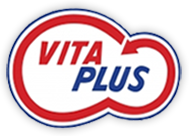
Monitoring income over feed costs can help maximize dairy cattle performance
 By PJ Neff, Vita Plus dairy nutritionist
By PJ Neff, Vita Plus dairy nutritionist
Finding strategies to maximize dairy cattle performance is critical for any dairy operation. With feed representing more than 50% of the cost of milk production, it is important to regularly evaluate feed costs, ask whether you are getting acceptable returns on your farm’s feed additives and dietary strategies, and explore whether you have opportunities to invest in milk production for a greater return.
Vita Plus consultants conduct a semi-annual income over feed cost (IOFC) survey to help producers monitor potential profitability. We gather farm data in October and March to determine the average income over feed costs for dairies in Michigan, Indiana and Ohio. Click here to enlarge table.  Survey herds are ranked by IOFC. Milk income is calculated based on the Class III announced price from the U.S. Department of Agriculture (USDA) for the data collection month. On-farm raised feed costs are standardized to current year prices provided by AgriGrowth™ Solutions, LLC and adjusted for dry matter. Prices of purchased feed ingredients are collected from the participating dairies. From the cost data, total feed costs are calculated based on the average dry matter intake of the herd. Ration forage percentage, milking frequency and days in milk are also documented.
Survey herds are ranked by IOFC. Milk income is calculated based on the Class III announced price from the U.S. Department of Agriculture (USDA) for the data collection month. On-farm raised feed costs are standardized to current year prices provided by AgriGrowth™ Solutions, LLC and adjusted for dry matter. Prices of purchased feed ingredients are collected from the participating dairies. From the cost data, total feed costs are calculated based on the average dry matter intake of the herd. Ration forage percentage, milking frequency and days in milk are also documented.
The survey in this geography has yielded some interesting results over the past three years. We observed an increase in average milk fat percentage from 4.08% in October 2022 to 4.20% in October 2024. Feed costs have decreased over this period from $0.151 to $0.128 per pound of dry matter.
We have also evaluated statistical relationships for factors related to both IOFC as well as energy-corrected milk (ECM) yield to identify characteristics of top-ranking farms.
The herds ranked at the top of the survey don’t necessarily have the lowest feed costs but typically have some of the highest ECM yields. Across multiple surveys, ECM yield was consistently and positively related to IOFC. Top-ranking herds often had ECM yields greater than 100 pounds.
The second observation was that total feed cost and dry matter intake had an inconsistent relationship with IOFC – likely driven by the variation in milk income and feed costs between dairies – but were positively related to ECM yield.
Dry matter intake is important for high ECM. While dry matter intake is influenced by a multitude of factors, we noted that high ECM herds focus on consistent feed availability for cows. High ECM herds are also typically investing an average of 1 cent per pound of dry matter above the average.
Investing in the lactating rations when milk or milk component prices are high provides the opportunity to increase return on investment. To help dairy producers strategize allocation of discretionary feed cost, dairy consultants should look at and understanded projected milk price direction trends for the upcoming months.
With a focus on farm profitability, it is important for dairy producers and their nutritionists to regularly evaluate IOFC. Contact your Vita Plus consultants to help you optimize the use of available ingredients to maximize herd performance while managing feed costs.
| Category: |
Business and economics Dairy Performance |

